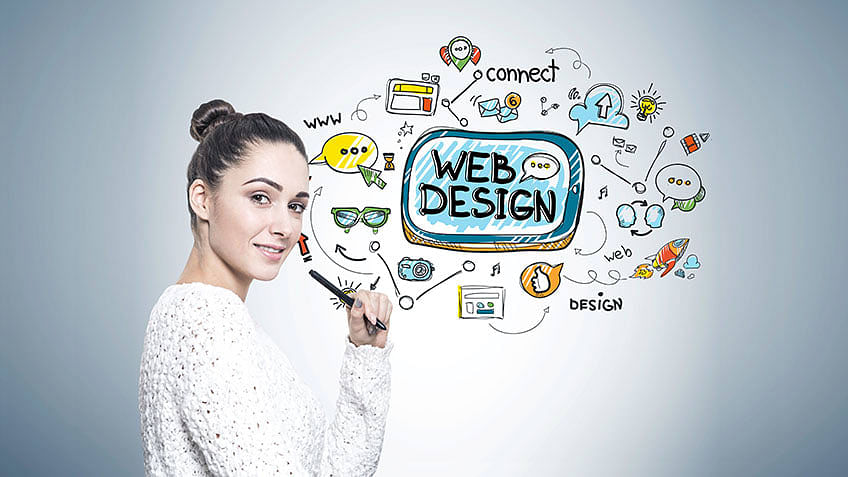Important Attributes That Specify Quality Web Design Gauteng Provider
Important Attributes That Specify Quality Web Design Gauteng Provider
Blog Article
Discovering Different Types of Internet Design to Improve Customer Experience
In the ever-evolving electronic landscape, the expedition of diverse internet layout methodologies is paramount for enhancing customer experience. Integrating interactive components more enhances the individual trip, making sites much more appealing and vibrant.
Receptive Website Design
In an age where digital usage transcends several tools, receptive internet design has actually become a keystone of efficient user experience. This flexibility not only boosts visual allure but additionally boosts ease of access and navigation, important for preserving customer interaction.
The implementation of RWD begins with a mobile-first method, focusing on the tiniest display dimension to assure functionality and aesthetic coherence. By making use of CSS media inquiries, designers can customize the web site's look based on the attributes of each device. This makes certain that pictures scale correctly, text continues to be clear, and interactive elements are easily available, therefore minimizing the need for excessive scrolling or resizing.
Furthermore, receptive design contributes to boosted seo (SEO) by providing a constant user experience and lowering bounce prices. Internet search engine favor mobile-friendly sites, making responsiveness an indispensable component of digital approach. In essence, receptive website design is indispensable for fitting varied customer communications, fostering a appealing and inclusive online visibility.
Minimalist Style Approaches
Minimal design's allure depends on its capacity to boil down complicated info into its most vital aspects, developing a intuitive and clean individual experience. By prioritizing simplicity, minimalist design removes peripheral information, allowing users to concentrate on core material and functionality. This strategy is defined by sufficient white area, tidy lines, and a limited color palette, all of which add to an aesthetically pleasing and efficient user interface.

Moreover, minimalist design supports faster packing times, as fewer graphical aspects and lowered material intricacy can decrease the amount of information needed to make a website. This efficiency not only enhances individual contentment but likewise adds to far better seo (SEO) positions. Subsequently, minimal layout is not simply a stylistic selection yet a strategic strategy that can significantly impact user engagement and conversion prices.
Interactive and Dynamic Aspects
Vibrant and interactive elements are crucial in improving customer involvement and producing memorable internet experiences. These aspects consist of computer animations, float effects, sliders, and real-time updates, which not only capture individuals' attention but also help with smooth navigation. By including these attributes, developers can transform fixed pages right into interesting electronic atmospheres that encourage interaction and exploration.
Animations, for circumstances, can guide customers through complex details without frustrating them, while hover results give prompt comments, enhancing the individual's understanding of clickable locations. Web Design Gauteng. Additionally, sliders enable users to see material at their own speed, and real-time updates ensure that details presented is relevant and present, preserving the customer's passion

User-Centric Style Methods
A foundation of reliable internet style is the implementation of user-centric design strategies, which focus on the demands and preferences of completion individual over all else. By concentrating on the individual, developers can create instinctive, accessible, and interesting experiences that boost contentment and drive communication. User-centric layout involves extensive study to comprehend the target market's habits, challenges, and objectives. This research is important for creating identities and scenarios that guide design choices, ensuring the final product resonates with individuals.
One essential method is usability screening, which involves observing actual users as they interact with the layout. This process determines discomfort factors and locations for improvement, allowing designers to fine-tune the user interface iteratively. Integrating comments loopholes and agile techniques even more guarantees the layout evolves in alignment with customer assumptions.
Moreover, access is an essential element of user-centric style. Making sure that digital systems are obtainable to all users, including those with impairments, improves inclusivity and expands the potential user base. This can be achieved via compliance with Internet Content Ease Of Access Standards (WCAG) and the thoughtful application of design principles like readability, contrast, and navigation.
Eventually, successful user-centric style fosters a smooth connection in between the individual and the digital anchor environment, elevating overall customer experience.
Applying Latest Style Trends
In the world of internet layout, staying abreast of the most up to date design trends is essential for creating aesthetically engaging and functional interfaces that mesmerize individuals. As electronic experiences evolve, developers are increasingly accepting patterns that stress minimalism, interactivity, and customization. Minimal design, defined by tidy lines and adequate white area, enables individuals to concentrate on material without unneeded diversions. This technique not only enhances aesthetics yet likewise enhances use by improving navigating and decreasing cognitive tons.

Furthermore, integrating the current typography trends, such as variable font styles, supplies flexibility and versatility across various devices and screen sizes, ensuring consistency in individual experience. Lastly, dark setting designs have actually gotten popularity due to their aesthetic allure and power effectiveness on OLED displays. By tactically implementing these patterns, web designers can develop ingenious and straightforward websites that reverberate with modern audiences.
Verdict
A detailed expedition of various internet design approaches is essential for improving customer experience. Inevitably, a educated and well balanced approach to web design substantially enhances user satisfaction and interaction, leading to improved general internet site efficiency and success.
In the ever-evolving electronic landscape, the expedition of varied web layout methodologies is paramount for improving individual experience.A foundation of Get the facts efficient web layout is the execution of user-centric style methods, which prioritize the needs and preferences of the end user above all else. Ensuring that digital systems are accessible to all users, consisting of those with handicaps, boosts inclusivity and widens the prospective description user base.In the realm of internet style, staying abreast of the latest layout fads is vital for creating useful and visually engaging interfaces that astound users (Web Design Gauteng).A thorough expedition of various web style techniques is necessary for boosting individual experience
Report this page